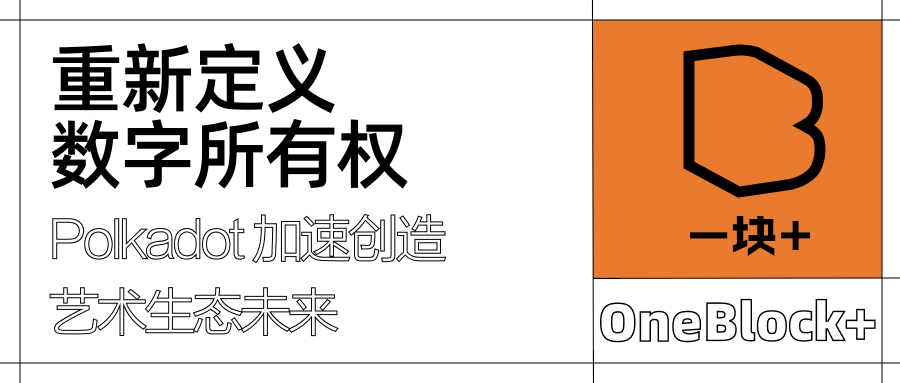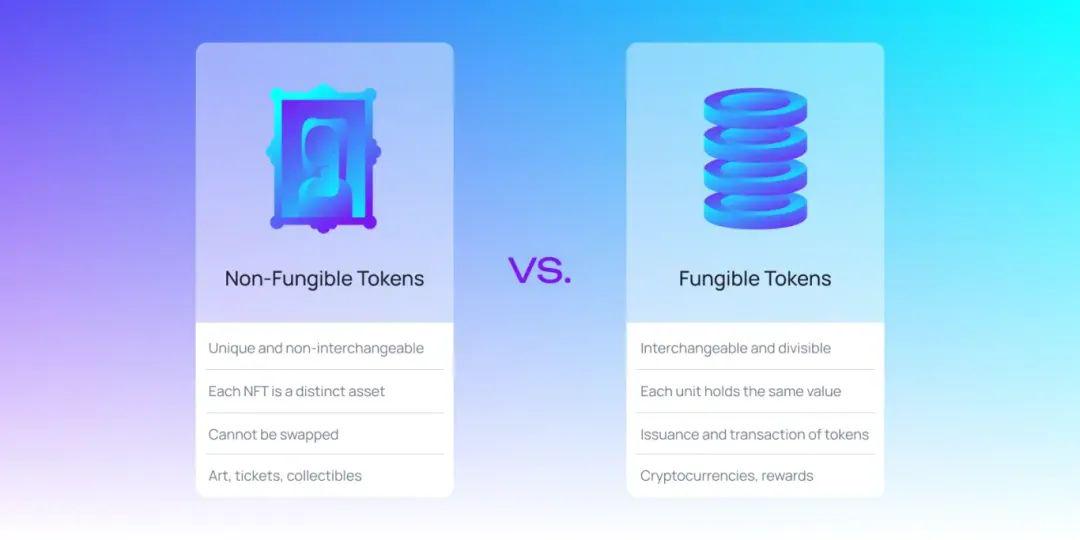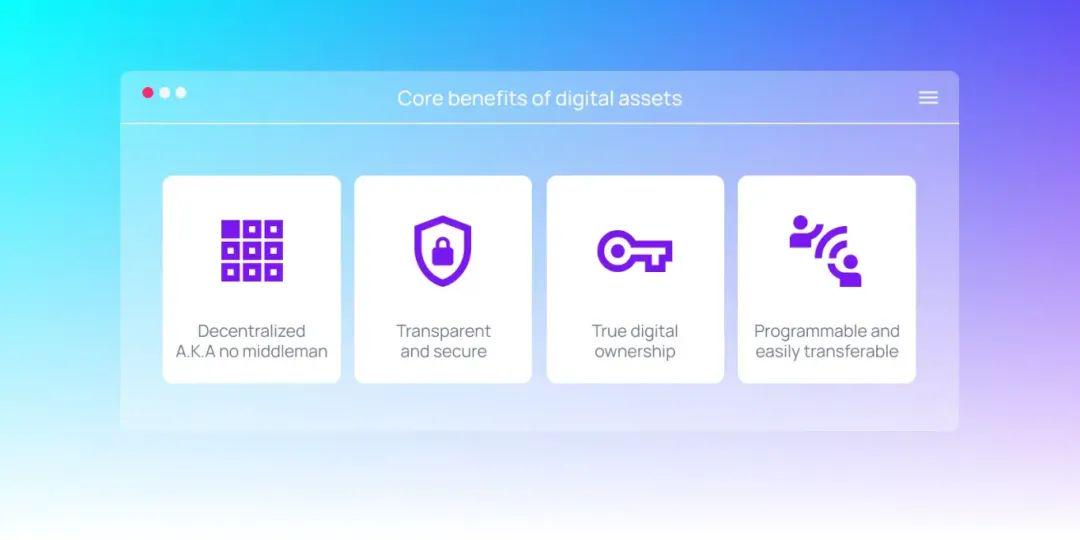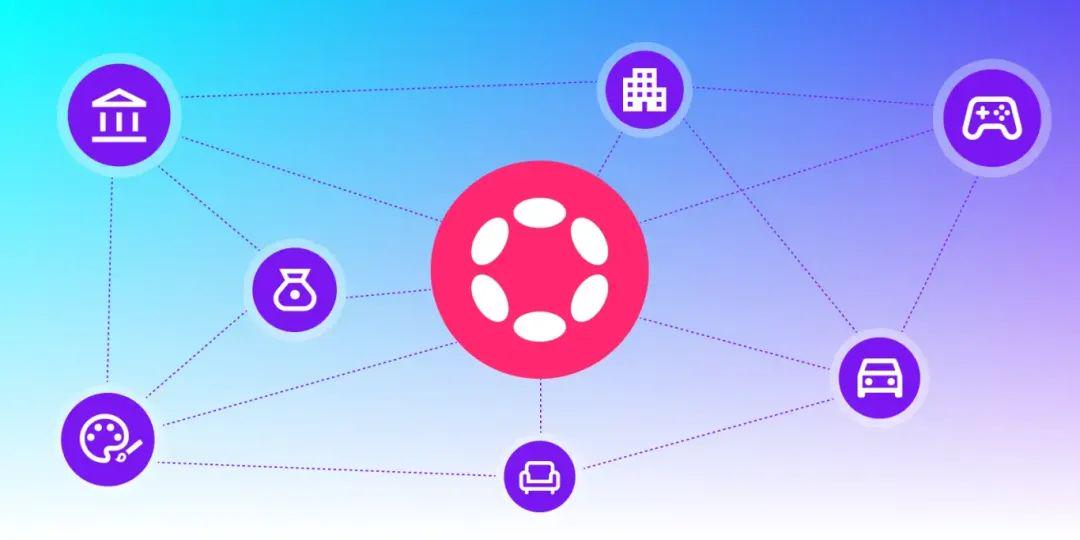
In recent years, the cryptocurrency market is accelerating towards mainstream adoption, and digital assetization is redefining digital ownership in games and music, enabling players and artists to control their assets. With the interoperability of blockchain, NFT, and Polkadot, the digital economy is becoming more decentralized, secure, and accessible.
Ownership is constantly evolving in the digital age, and the digital assetization of works is redefining how we own, trade, and protect assets, unlocking practical utility across industries. At the core of its project ecosystem, digital assets can use blockchain to establish a verifiable, transferable, and programmable ownership model , which has changed music and games, and artists and players are truly controlling their work and purchasing processes, but this is just the beginning.

Based on the Polkadot ecosystem, a fairer, more transparent and more decentralized digital economy is emerging - a new model of digital assets where ownership is real, forgery is impossible, and value is fairly distributed.
🌔 What are tokenized digital assets?

Digital assets are everywhere, from streaming music to video game collectibles. Songs on Spotify, Fortnite skins, or digital movies on Amazon all exist as digital assets, but these assets are limited to the platform where they are distributed, and users do not really own them.
At the same time, not all digital assets are equal. While traditional digital assets are still locked in closed ecosystems , tokenized digital assets exist on the blockchain, making ownership verifiable, transferable, and secure across different platforms. This shift is changing industries such as gaming and music, as digital assetization allows artists and players to truly control the ownership of their works.
🥯 Digital assets and tokenized digital assets
- Digital assets: exist in a closed system, which means ownership and transferability are restricted by the platform
- Tokenized digital assets: blockchain-based, transferable and verifiable, turning static digital goods into real on-chain assets
For example, in NFL Rivals, player cards and jerseys are not just in-game skins locked in a single platform, they are tokenized assets minted on Polkadot's Mythos blockchain. This allows players to securely own, trade, and verify their assets, and each transaction is recorded on the chain in a transparent and trusted manner. By leveraging Polkadot scalability and shared security, NFL Rivals ensures that digital ownership is authentic, transferable, and prevents counterfeiting.
🥯 NFTs vs. Fungible Tokens: The Key Difference
Tokenized digital assets are divided into two categories:
- NFT (Non-Fungible Token): A unique, non-exchangeable asset with verifiable on-chain ownership. Each NFT represents a different item, such as a rare game item or music track.
- Fungible Tokens: Interchangeable and divisible assets, such as cryptocurrencies and in-game currencies, where one unit has the same value as another, making them ideal for payments and rewards.
💡 Think of it this way: NFTs are like limited edition collectibles, while fungible tokens function like digital cash.
🌔 How tokenized digital assets are changing games and music
🥐 Games: True Player Ownership
For decades, gaming economies have been one-sided — players purchase in-game items, but they never actually own them.
Tokenized digital assets change this, allowing players to freely own and trade their in-game items.
🧀 A gamer's fight for true ownership
Alex has spent hundreds of dollars purchasing in-game items across multiple games, only to lose access when servers shut down or his account was banned. With tokenized game assets on the Polkadot platform, Alex truly owns his digital purchases, is able to trade them on the open market, and can even use them in compatible games, transforming his digital goods from temporary rentals to valuable, permanent property.
Taking the example of NFL Rivals above, unlike traditional games where items are locked to a single platform, this game uses blockchain to tokenize player cards and jerseys. The same concept applies to other gaming projects, where tokenized assets ensure that players have true ownership of in-game items.
Other Polkadot-based gaming projects, such as the dark fantasy RPG Evrloot and the NFT-based vehicle racing game Exiled Racers, advance by allowing players to fully own, trade, and upgrade NFT-based heroes, vehicles, and gear. These projects demonstrate how blockchain-driven ownership can shift control from centralized game publishers to players, enabling a real economy where interoperable assets retain value outside of individual games.
This means:
- Players own their own assets, and every transaction is transparently recorded on the chain
- Items can be traded, sold or transferred, creating a player-driven economy
- Fraud and counterfeiting are impossible, ensuring fair play and true ownership
Leveraging the shared security and scalability of Polkadot, these games create a trustless, transparent gaming economy where players, not platforms, hold the power.
🧀 Remix Culture and User-Generated Content
Tokenization also changes the way gamers interact with intellectual property. In traditional games, companies strictly control their intellectual property, often limiting player creativity and monetization opportunities. Using tokenized assets can:
- Players can create, own, and sell modified versions of in-game items, with smart contracts automatically attributing and compensating the original creators.
- Game developers can establish clear parameters for what is allowed, while enabling remix culture to flourish.
- User-generated content becomes verifiably unique, with a transparent attribution chain that tracks the evolution of creative works.
The model encourages innovation while respecting intellectual property rights, creating a collaborative ecosystem where both original creators and remixers are fairly rewarded for their contributions.
🥐 Music: Ownership beyond streaming
The music industry has long been plagued by middlemen controlling distribution and monetization.
Tokenized digital assets are changing this by giving artists and fans true ownership.
🧀 Direct connection between artists and fans
Maya is an independent musician who used to earn pennies per stream on traditional platforms. Now, by minting her music as NFTs on a Polkadot-powered platform, she sells limited-edition digital albums directly to fans, earning fair upfront compensation and ongoing royalties from secondary sales. Her fans don’t just stream her music — they own a piece of it, creating a direct artist-fan relationship that benefits everyone except the middleman.
Platforms like Polkadot-backed Beatport allow artists to sell music as NFTs, enabling:
- Direct ownership and sales, bypassing streaming platforms
- Fans buy, trade and collect unique music assets
- Automatic royalty payments via smart contracts, ensuring artists are fairly compensated
🧀 Taking Back Subjectivity: The Intellectual Property Revolution
Perhaps most transformative, tokenization allows musicians to maintain ownership of their creative masters — the original recordings of their work. There is no need to re-record an entire catalogue in order to take back control. Historically, record companies have owned these masters, controlled how the music is used, and collected the majority of the royalties. With a blockchain-based ownership model:
- Artists can tokenize their Masterpieces into NFTs, maintaining creative control while selling fractional ownership to fans and investors
- Smart contracts can automatically distribute royalties when music is used in ads, movies or samples
- Musicians can set their own licensing, sampling and remixing terms, creating a flexible IP framework that promotes creativity while ensuring fair compensation
Rather than renting access to music, tokenization enables true ownership for creators and consumers, while fundamentally rebalancing intellectual property in favor of the artists who created the work.
🌔 The core advantages of digital asset tokenization

The power of tokenization lies in its ability to make digital assets secure, freely transferable, and fraud-proof
——Without the need for intermediaries, this transformation rooted in decentralization is an important reason why blockchain technology is innovative and transformative.
🥯 How does blockchain enable digital ownership?
Traditional digital assets exist in centralized ecosystems where ownership can be restricted, changed, or even revoked at any time. In contrast, tokenized digital assets reside on blockchain ecosystems like Polkadot, where ownership records are immutable and verifiable, and every transaction is permanently recorded on the chain, ensuring authenticity and providing a transparent ownership history.
🥯 What are the benefits of decentralized ownership?
By eliminating intermediaries, tokenization enables individuals to fully own, trade, and monetize their assets without platform restrictions or third-party interference.
Whether in gaming, music, or other industries, blockchain ensures that value flows directly to creators and users rather than being captured by centralized entities.
🥯 Why is tokenization transformative?
Unlike static digital assets, tokenized assets are dynamic, programmable, and interoperable - opening up new possibilities for the digital economy. Smart contracts can automate royalties, enable cross-platform compatibility, and create more liquid markets, which has changed the way artists monetize music, how gamers interact with virtual economies, and how digital ownership is redefined in a more transparent and fair way. Based on Polkadot, tokenized digital assets are more than just a technological advancement, they represent a paradigm shift in the way we define ownership, value, and participate in the digital world.
🌔 Why Polkadot?
Interoperability is the future of tokenized digital assets

To realize the full potential of digital ownership, tokenized assets need to move freely between platforms and applications rather than being locked into a single ecosystem. Imagine buying a rare in-game skin and being able to use, sell, or trade it across different game worlds, or owning a music track as an NFT and seamlessly accessing it on multiple streaming services. While cross-chain asset transfers have not yet been widely adopted by the gaming and music industries today, the Polkadot infrastructure ensures that the technology is ready. Just as Polkadot games like NFL Rivals give players true ownership of their assets, future interoperability could allow them to trade these assets across multiple markets and platforms, not just in one game.
🥯 How does Polkadot support NFT interoperability?
Polkadot’s Cross-Consensus Messages (XCM) allow assets to be securely moved between different Polkadot ecosystem-connected aggregations without the need for external bridges.
This technology brings the following goals into sight:
- True asset liquidity: in-game items can be used across multiple titles or marketplaces rather than being locked into a single platform
- Expanded trading opportunities: Players and collectors can buy, sell and transfer NFTs on different platforms in more ways
- New business models: digital goods are not limited to one platform, but can be integrated with various applications, unlocking new economic opportunities
🥯 Why Polkadot for cross-chain digital ownership?
Tokenization is only as strong as the network that supports it, and Polkadot is purpose-built to unlock the full potential of digital assets. By breaking down silos and enabling seamless transfers across ecosystems, Polkadot is creating a scalable, secure, and future-proof foundation for a more open and integrated tokenized economy.
With its scalable rollup infrastructure, advanced security, and XCM interoperability, Polkadot provides users with the tools they need for secure digital ownership and frictionless asset transfers. This interoperability will be essential as secondary markets develop, allowing gamers, artists, and collectors to maximize the utility of their assets across many ecosystems.
By choosing Polkadot, gamers, fans, and creators gain access to:
- Secure, decentralized network: ensures ownership records are immutable and fraud-proof
- Interoperability through XCM: enabling future cross-chain asset transfers as use cases expand
- Scalability for the growing digital economy: supporting seamless transactions as tokenization adoption increases
As the industry embraces on-chain ownership, Polkadot not only supports this transformation, but also shapes the infrastructure of the future digital economy. Whether in gaming, music, finance, or other fields, tokenized assets are changing the way we think about ownership, and Polkadot is laying a solid foundation.
🌔 Embrace the innovative future of ownership development
As tokenization expands beyond speculation, the need for a strong decentralized infrastructure becomes apparent. Unlike traditional digital assets that rely on centralized platforms, the Polkadot ecosystem architecture ensures that tokenized assets are verifiable, tamper-proof, and fraud-proof . Every transaction and ownership record is permanently stored on a decentralized network, making forgery and unauthorized changes impossible.
Today, tokenization is bridging the gap between physical and digital ownership - enabling assets such as art, real estate, and luxury goods to be digitally displayed and securely traded. While games and music are leading the way, the technology is rapidly expanding into other areas. In upcoming blogs, we will explore the key role of real-world asset (RWA) tokenization, DeFi, and decentralized infrastructure (DePIN) in accelerating the transformation.
With Polkadot's scalable infrastructure set, advanced security, and cross-chain interoperability, it not only supports tokenization, but also lays the foundation for the future development of the digital economy.














